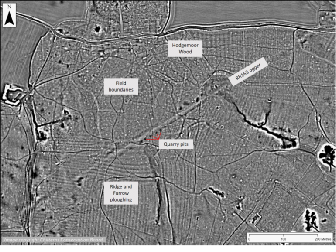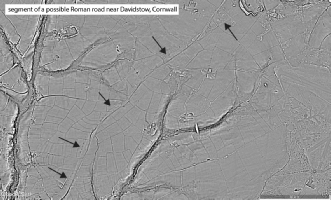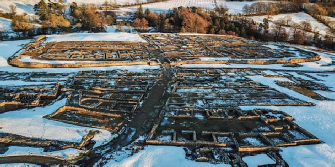
“A thousand roads lead men forever to Rome”; Alain de Lille, 1175
All content © Roman Roads Research Association 2016, all rights reserved; unless otherwise stated.

a charity registered in England & Wales, no 1163854.
 JOIN US
JOIN US
CONTACT US
JOIN US
JOIN US
CONTACT US

Thursday 24 November 2022, Dr. Andrew Tibbs; The Rivers and Roads of Flavian Scotland
Thursday 8 December 2022, Bronwen Riley; Journey to Britannia
Thursday 5 January 2023, Rescheduled from 13/10/22 Dr. Chris Smart; Beyond Isca: new evidence for Roman expansion in South West Britain
Thursday 26 January 2023, Ed Peveler & Nigel Rothwell; Reinterpreting Roman Roads in the Chilterns -
Thursday 23 February 2023, Prof. Will Bowden; Boudica, street grids and the changing face of Caistor Roman town
Thursday 23 March 2023, Dr. Andrew Birley; Subject and title TBC
Thursday 20 April 2023, Dr. Francis Young; Charles Bertram and De Situ Britanniae
Conquest: The Rivers and Roads of Flavian Scotland
Boudica, street grids and the changing face of Caistor Roman town

Our 2023/4 schedule is currently in preparation. If you may be a potential future speaker, or have any suggestions for future talks and seminars, please contact us.

Vindolanda a fort and frontier in transition.
Thursday 23 March, 2023
Dr. Andrew Birley

Reinterpreting Roman Roads in the Chilterns -
Thursday 26 January, 2023
Dr. Ed Peveler & Nigel Rothwell
Journey to Britannia
Thursday 8 December, 2022
Bronwen Riley
AD 130. Rome is the dazzling heart of a vast empire and Hadrian its most complex and compelling ruler. Faraway Britannia is one of the Romans' most troublesome provinces: here the sun is seldom seen and "the atmosphere in the country is always gloomy". What awaits the traveller to Britannia? How will you get there? What do you need to pack? What language will you speak? How does London compare to Rome? Are there any tourist attractions? And what dangers lurk behind Hadrian's new Wall? Combining Greek and Latin sources and archaeological evidence, Bronwen Riley evokes the journey of the new governor of Britannia and his entourage from the heart of empire to Hadrian's Wall at its north-
'An artful combination of history, archaeology and the imagination' -
‘A brilliant idea, to describe the journey of Julius Severus as he travelled from Rome to Britain to take up his new post of governor of Britain... Well written, eminently readable... It is a must for all interested in the Roman Empire and Roman Britain' -
In the winter of 2018/19 high resolution LiDAR data was acquired by the Chilterns Conservation Board (CCB) to investigate archaeological features, and particularly the Iron-
We will look at some of the characteristics of 'known' Roman Roads within the Chilterns AONB and illustrate how these data have helped in reinterpreting the relative importance of some of them. We will also explore implications of the discovery of a new alignment of Roman Road on the likely route between Verulamium and Silchester, the so-
A typical LiDAR Local Relief Model image over an area of ancient woodland, which here shows the best-





The front cover of Bronwen’s book, Journey to Britannia


This lecture will draw upon latest research undertaken as part of the University of Exeter's 'Unlocking Landscapes' project, which is taking a crowd-


Beyond Isca: new evidence for Roman expansion in South West Britain
Thursday 5 January, 2023
Dr. Chris Smart



The possible river crossing at Bertha
Scotland is one of the few areas of the ancient world which was never completely occupied by the Roman army, and despite numerous attempts, never fully assimilated into the Empire. Arguably, it was during the 1st century that the Imperial Army made the most successful inroads into the lands beyond the province of Britannia, reaching as far as the shores of the Moray Firth in the north. However, the full length and extent of Roman occupation in this period remains debated by scholars.
Based on the findings of his latest research, Dr Andrew Tibbs (Durham University) will explore the role and function of roads and waterways in 1st century Scotland, how they were used by Roman military and what we really know about these today.
Charles Bertram & De Situ Britanniae (Title to be confirmed).
Thursday 20 April, 2023
Dr. Francis Young

The De Situ Britanniae and the eighteen Itineraries contained within it, supposedly compiled by Richard of Cirencester, appear frequently as source material in 18th & 19th century writings on Roman history and Roman roads in particular, and even some 20th century ones, but is generally held to be a hoax perpetrated by Charles Bertram, in the 18th century. Francis will talk about the impact of the document in the context of scholarship on Roman routes and the Antonine Itinerary from John Leland onwards.

Thursday 23 February, 2023
Prof. Will Bowden

Venta Icenorum (Caistor-
Aerial photograph of Venta Icenorum © Mike Page 2022.

Watch on YouTube
Today we see the Roman frontier, especially Hadrian’s Wall, presented as a serene monument fixed in stone. This largely peaceful and tranquil ruin is situated in the beautiful rolling hills of Northumberland. However, such images, while evocative, conceal the grimier ever day realities and opportunities that frontier people faced, either as members of the military community or as those oppressed by them. The fort and settlements at Vindolanda, dating from the earliest occupation of the area and lasting through all the centuries of Roman rule (and beyond) offers a glimpse into the daily struggles and lives of those communities which has yet to be paralleled. The organic soils preserve things which have long rotted away elsewhere, artefacts in wood, leather, textile, and bone. But most of all, it is the letters, thin postcards from the past which are covered in ink handwriting which are the greatest treasure of all. Each one is a window into the very soul of the person who wrote it, each letter, no matter how mundane, is a first-

Watch on YouTube
Sorry, this talk was not recorded

Watch on YouTube

Aerial photograph of Vindolanda.

Watch on YouTube

Watch on YouTube

Most of the talks for our 2022-
| Lecture & Seminar Series |
| RRRA GEOPHYSICS PROJECT |
| EXCAVATIONS |
| REPORTS |
| Conferences |
| 2023-4 Lectures & Seminars |
| 2022-3 Lectures & Seminars |
| 2022 Lectures & Seminars |
| 2021 Lectures & Seminars |
| Roads of Roman Britain Project |
| Portsmouth Programme, Sat. 3/9/16 |
| Portsmouth Programme, Sun. 4/9/16 |
| York Programme, Sat. 12/11/16 |
| York Programme, Sun. 13/11/16 |
| A Selection of Conference Papers |
| RRRA NEWSLETTERS |
| ITINERA, the Journal of the RRRA |
| JOIN US |
| Forum |
| Roman Roads in Britain PDF |
| Roman Roads in Britain PDF |
| OS Roman Road Files (Margary) |
| OS Roman Road Files (RRX) |
| Forum Terms & Conditions |